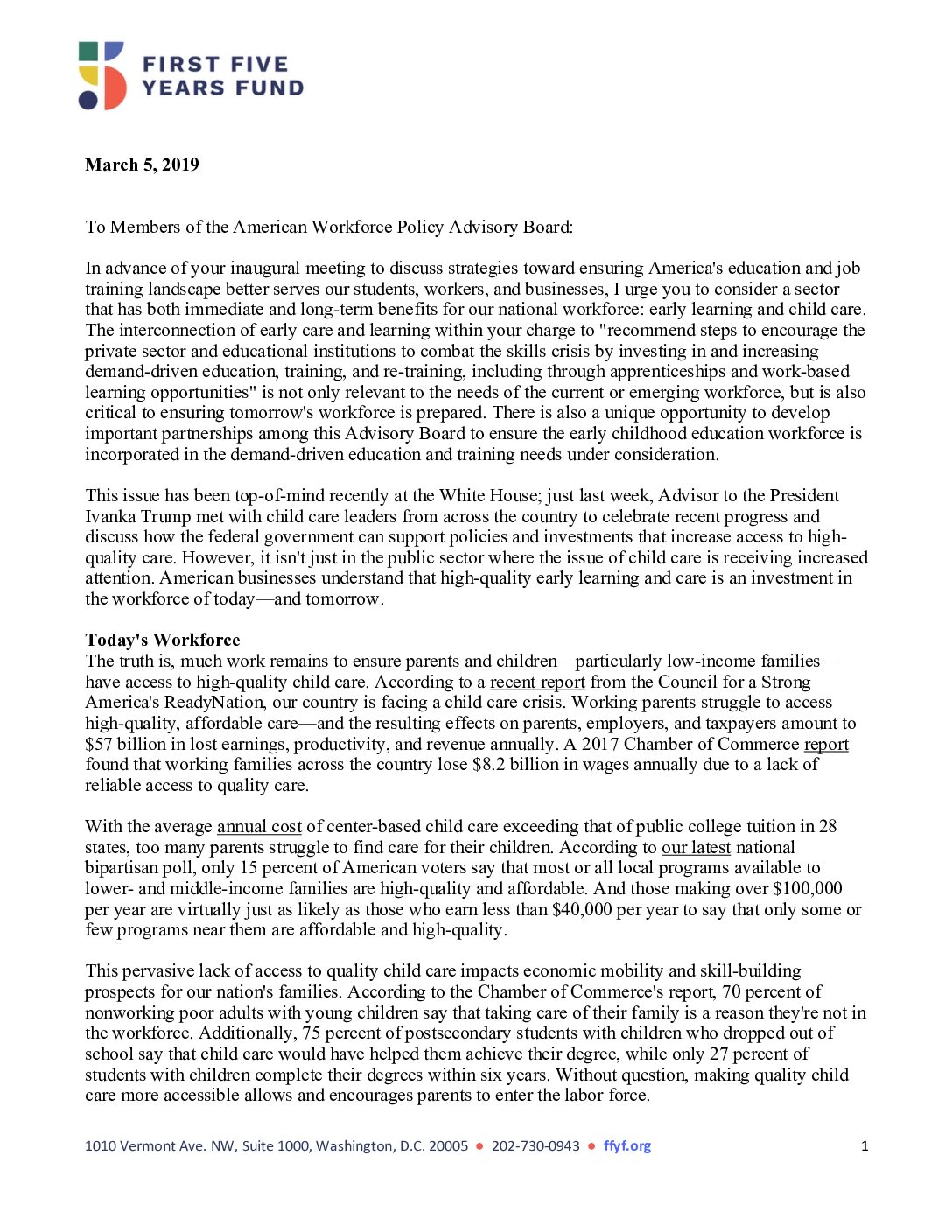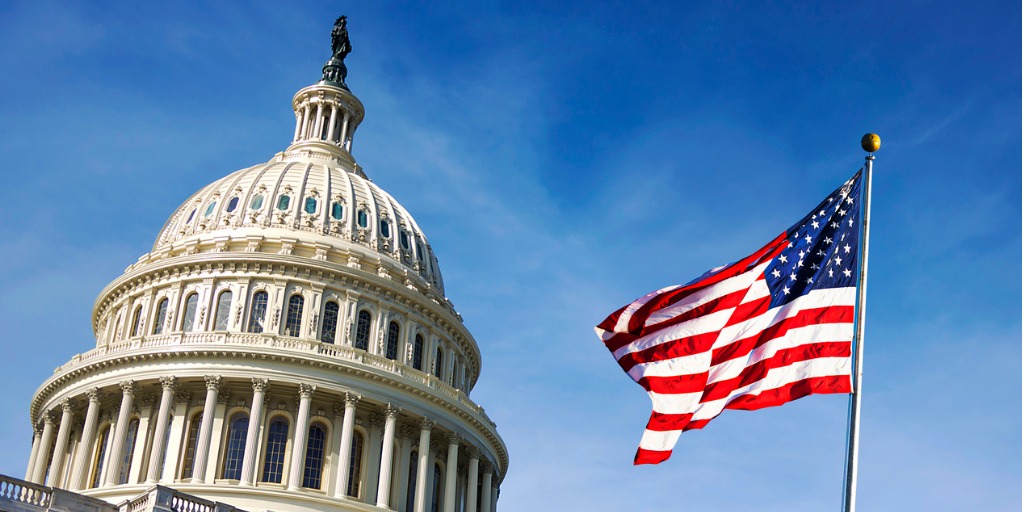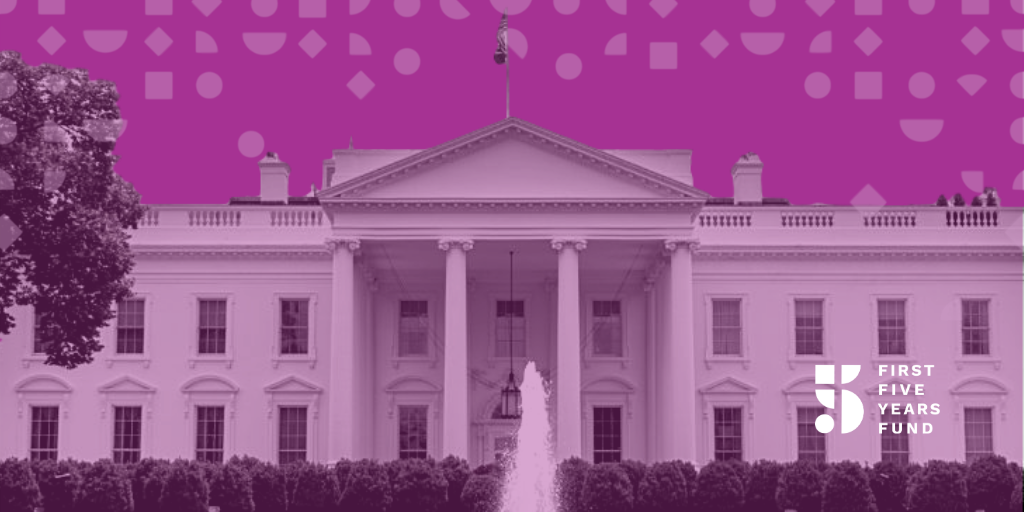FFYF Letter to White House Workforce Policy Advisory Board
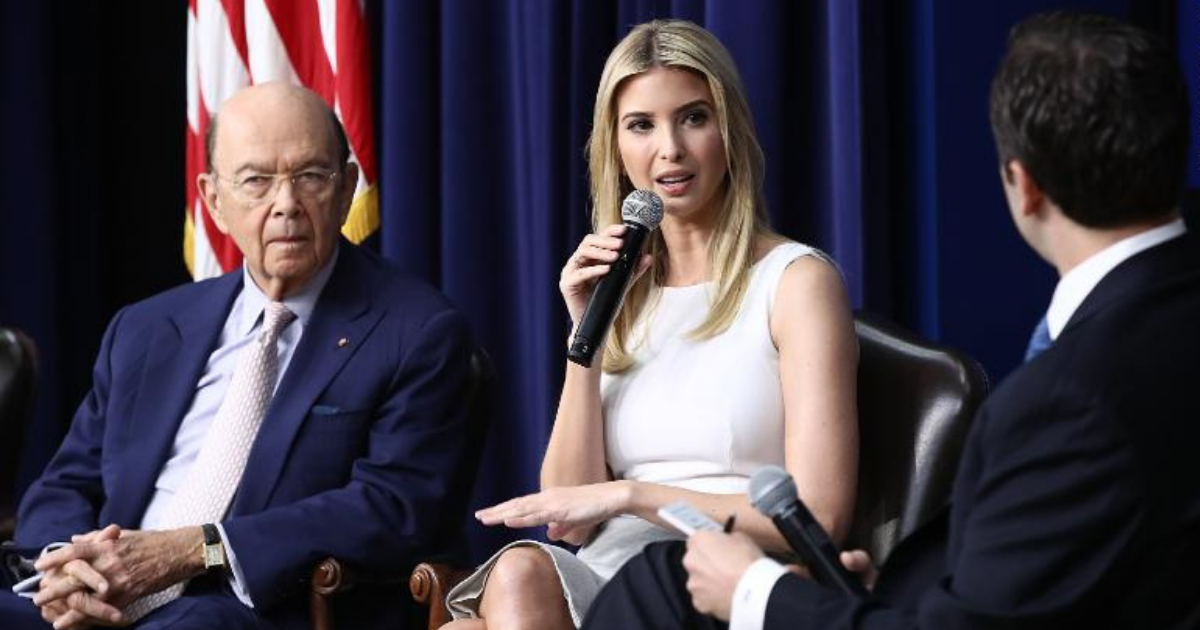
In February of 2019, the White House announced the creation of a Workforce Policy Advisory Board, tasked with advising Commerce Secretary Wilbur Ross and Adviser to the President Ivanka Trump on the administration’s efforts to develop job training programs to meet the changing demands of U.S. employers.
Ahead of the Board’s upcoming second meeting, FFYF Executive Director Sarah Rittling wrote to urge the prominent business and economic leaders on the board to ensure policies and proposals related to high-quality child care are part of their discussions.
As the workforce policy board organizes and tackles it’s charge to develop job training programs to meet the challenging demands of U.S. employers, there’s a unique opportunity for those represented in the room to factor in the role early childhood education and care plays in supporting current and future workforce needs.
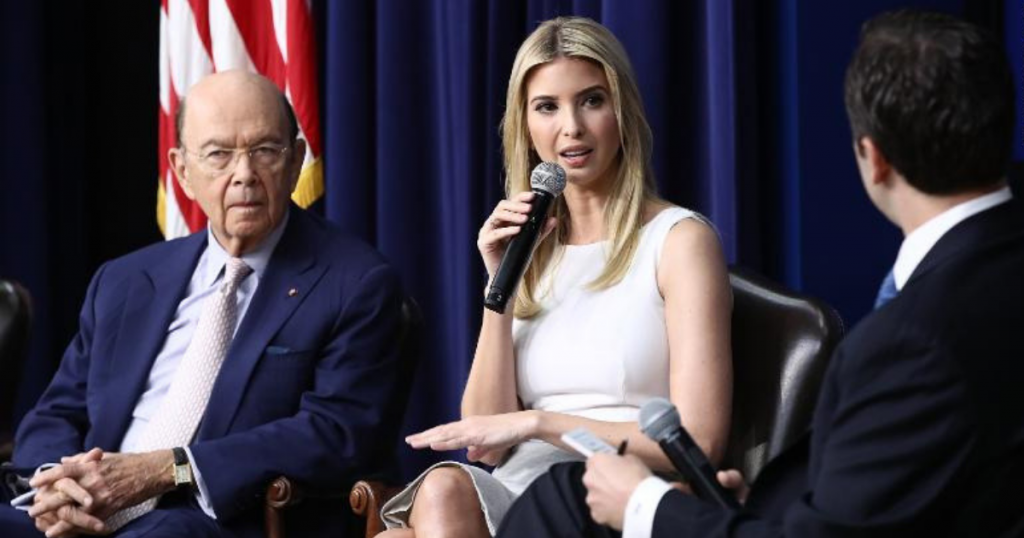
March 5, 2019
To Members of the American Workforce Policy Advisory Board:
In advance of your inaugural meeting to discuss strategies toward ensuring America’s education and job training landscape better serves our students, workers, and businesses, I urge you to consider a sector that has both immediate and long-term benefits for our national workforce: early learning and child care. The interconnection of early care and learning within your charge to “recommend steps to encourage the private sector and educational institutions to combat the skills crisis by investing in and increasing demand-driven education, training, and re-training, including through apprenticeships and work-based learning opportunities” is not only relevant to the needs of the current or emerging workforce, but is also critical to ensuring tomorrow’s workforce is prepared. There is also a unique opportunity to develop important partnerships among this Advisory Board to ensure the early childhood education workforce is incorporated in the demand-driven education and training needs under consideration.
This issue has been top-of-mind recently at the White House; just last week, Advisor to the President Ivanka Trump met with child care leaders from across the country to celebrate recent progress and discuss how the federal government can support policies and investments that increase access to high-quality care. However, it isn’t just in the public sector where the issue of child care is receiving increased attention. American businesses understand that high-quality early learning and care is an investment in the workforce of today—and tomorrow.
Today’s Workforce
The truth is, much work remains to ensure parents and children—particularly low-income families—have access to high-quality child care. According to a recent report from the Council for a Strong America’s ReadyNation, our country is facing a child care crisis. Working parents struggle to access high-quality, affordable care—and the resulting effects on parents, employers, and taxpayers amount to $57 billion in lost earnings, productivity, and revenue annually. A 2017 Chamber of Commerce report found that working families across the country lose $8.2 billion in wages annually due to a lack of reliable access to quality care.
With the average annual cost of center-based child care exceeding that of public college tuition in 28 states, too many parents struggle to find care for their children. According to our latest national bipartisan poll, only 15 percent of American voters say that most or all local programs available to lower- and middle-income families are high-quality and affordable. And those making over $100,000 per year are virtually just as likely as those who earn less than $40,000 per year to say that only some or few programs near them are affordable and high-quality.
This pervasive lack of access to quality child care impacts economic mobility and skill-building prospects for our nation’s families. According to the Chamber of Commerce’s report, 70 percent of nonworking poor adults with young children say that taking care of their family is a reason they’re not in the workforce. Additionally, 75 percent of postsecondary students with children who dropped out of school say that child care would have helped them achieve their degree, while only 27 percent of students with children complete their degrees within six years. Without question, making quality child care more accessible allows and encourages parents to enter the labor force.
Future Workforce Needs
What’s more, access to quality early learning and care affects more than just today’s workforce—it has real impact on the workforce of the future by allowing children to develop the skills they need for success later in life. While parents are working, high-quality developmental experiences in child care build the cognitive and character skills that children need to do well in school and in life, including attentiveness, persistence, impulse control, and sociability. In fact, studies show that children—particularly those from low-income families—who receive a high-quality early childhood education are proven to be more likely to earn higher wages, live healthier lives, avoid incarceration, raise stronger families, and contribute to society.
As a result, according to research from Nobel Prize-winning economist James Heckman, for every dollar invested in high-quality child care, society gains up to $7.30 in economic returns over the long-term. In the short-term, however, increased investment in child care will immediately benefit the U.S. economy. According to a new report from the Committee for Economic Development, the U.S. child care industry serves as a critical driver to America’s economy—directly and indirectly supporting an estimated $99.3 billion in total U.S. output. The industry is made up of 675,000 small businesses and provides over 1.5 million jobs.
Getting it Right
If we, as a country, are going to simultaneously ensure today’s workforce has access to quality early care and learning options for their children and address ways in which we can enhance the quality of the care children are receiving, then we must also address the needs of teachers and leaders within the early childhood system. There are opportunities to build on national and state efforts—public and private—to improve early childhood educator effectiveness and preparation, increase overall supports to early learning teachers, and fill gaps.
I am asking the Workforce Policy Advisory Board to consider the integral role that early childhood education and care plays in reaching the Board’s goals. High-quality early learning and care offers a clear opportunity to bolster the U.S. workforce in the short- and long-term. It strengthens our economy and creates jobs, enables parents to work and develop new skills, and supports America’s young children as they build critical foundations for their own futures.
When considering solutions and opportunities for America’s workforce and economy, we must start at the very beginning. There’s no better place to invest than in the care and education of our nation’s children beginning at birth.
Sincerely,

Sarah Rittling
Executive Director
First Five Years Fund
Subscribe to FFYF First Look
Every morning, FFYF reports on the latest child care & early learning news from across the country. Subscribe and take 5 minutes to know what's happening in early childhood education.
